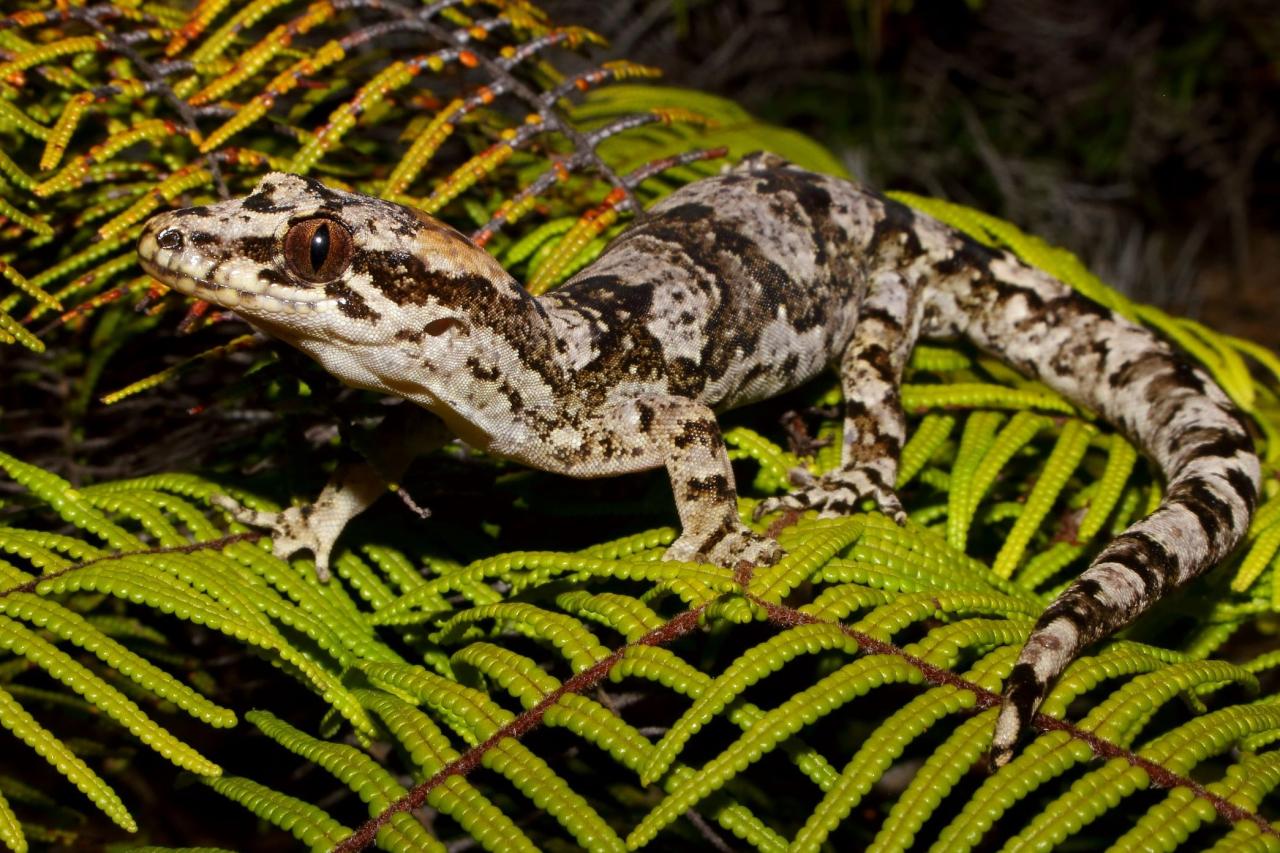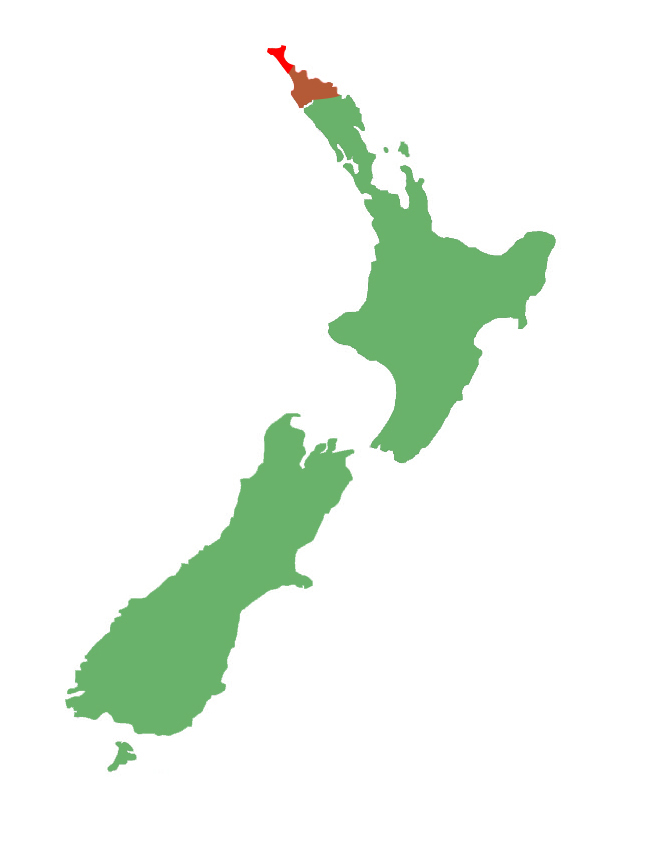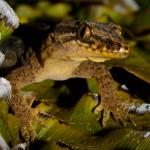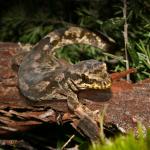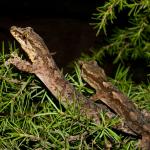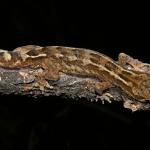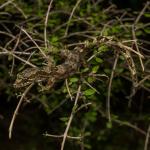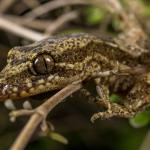- Home
- Herpetofauna Index
- Native
- Dactylocnemis "North Cape"
Dactylocnemis "North Cape"
Te Paki gecko
Dactylocnemis "North Cape"
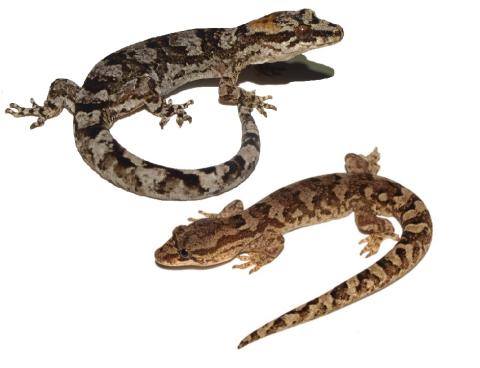
Length: SVL up to 84mm, with the tail being equal to the body length
Weight: unknown
Description
A large, and beautifully marked Dactylocnemis species from the northern tip of the North Island. Similar in appearance to the Pacific gecko (Dactylocnemis pacificus) it is likely that the two species may have speciated when parts of Northland (namely North Cape) were isolated from the rest of the North Island. As with the Pacific gecko, this species is characterised by its brown, olive, or grey colouration, which often incorporates lighter grey blotches or stripes highlighted with dark brown or black. A yellow or orange crescent marking may be present on the nape of the neck. The sides of the animal are dominated by a dark brown lateral band which extends from the nostril through the eye and onto the shoulder, and may continue the length of the body, this is bordered by a grey to white colouration below often with brown speckling. The undersides are a similar whitish-grey colour often with black or dark brown flecking.
Life expectancy
Unknown.
Distribution
Likely restricted to the northern Aupouri Peninsula (north of Houhora). The specific identity of Dactylocnemis from the Bay of Islands through to Houhora is uncertain, and thus it is possible that this species may also occur in this region.
Ecology and habitat
As with other members of the Dactylocnemis genus, this species is nocturnal and is just as likely to be found foraging on the ground (terrestrial), as in canopy (arboreal). Known to cryptically bask at the edge of retreats (loose bark, clay banks, etc.). A habitat generalist, associated with lowland kauri forest, scrub, shrubland, mangroves, and cliff faces.
Social structure
Likely to be solitary, but may utilise the same refuge sites as congeners.
Breeding biology
Unknown, but likely to be similar to the Pacific gecko (Dactylocnemis pacificus).
Diet
As with other members of the Dactylocnemis genus, Te Paki geckos are omnivorous. They have been recorded feeding on a wide range of invertebrates, as well as the nectar and fruit / berries of native plants.
Disease
Largely unknown.
Te Paki geckos have been recorded with ectoparasitic mites in the wild.
Conservation strategy
The Te Paki gecko along with its sister taxon the Matapia gecko (Dactylocnemis "Matapia") are listed as "At Risk - Declining". This is due to the ongoing clearance of scrubland (young manuka and kanuka forest), and predation by mammalian pest species (rats, cats, mustelids, etc.). Being restricted to the mainland, it is at an increased risk of extinction if the impacts of habitat degradation and predation by mammalian pest species are not addressed.
Interesting notes
The Te Paki gecko gets both its common and TAG names from its distribution, being found in the Te Paki region and the wider North Cape.
Te Paki geckos are members of the genus Dactylocnemis, a group of closely related species which are confined to the North Island of New Zealand, are regionally distributed (including several island-endemic species) and were once all considered as a single highly-variable species - Hoplodactylus pacificus.
The Te Paki gecko belongs to the "northern clade" within the Dactylocnemis genus, with its sister taxa being the Three Kings gecko.
References
Hitchmough, R.A., Barr, B., Lettink, M., Monks, J., Reardon, J., Tocher, M., van Winkel, D., Rolfe, J. (2016). Conservation status of New Zealand reptiles, 2015; New Zealand threat classification series 17. Wellington: New Zealand Department of Conservation.
Jewell, T. (2011). A photographic guide to reptiles and amphibians of New Zealand. Auckland: New Holland Publishing.
McCallum, J. (1981). Reptiles of the North Cape region, New Zealand. Tane, 27, 152-157.
van Winkel, D., Baling, M. & Hitchmough, R. (2018). Reptiles and Amphibians of New Zealand: A field guide. Auckland: Auckland University Press, 376 pp.

